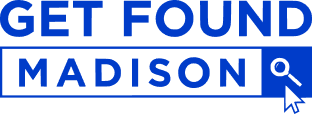Here’s Facebook Ads case study from Splendid Beast Pet Paintings.
We ran a Q4 campaign where we spent $391.88 on Facebook Ads and made $5,942 in sales for a 15.16x Return on Ad Spend (or ROAS).
You can see the results below from our Facebook Ads Manager.

Now, this was a remarketing campaign, so we showed ads like this to people who had already been to the website. We would call this “bottom-of-funnel traffic.”
It’s always good to start closest to conversion and work your way up in our experience.
The big winner among the different groups we retargeted was the “Top 25% Visitors Last 30 Days” ad set. Caroline from our team set this up using our Facebook Pixel and the ad set hit an incredible 27.75x ROAS (2,775%!).
These are the people who had already spent the most amount of time on the site, so the ads may have helped nudge them along to buy their pet paintings.
Normally we just run this paid social media traffic back to the website. But because they’ve already been to the website and left, we tried something new with this campaign: we took them to a squeeze page where their only choice was to opt-in to the email list to get free shipping or leave.
Counterintuitively, this actually added some steps to their purchase path but yielded better results!
Found website (likely through Google) -> Left website -> FB Remarketing Ad -> Squeeze Page -> Email -> Back to Ecommerce Website
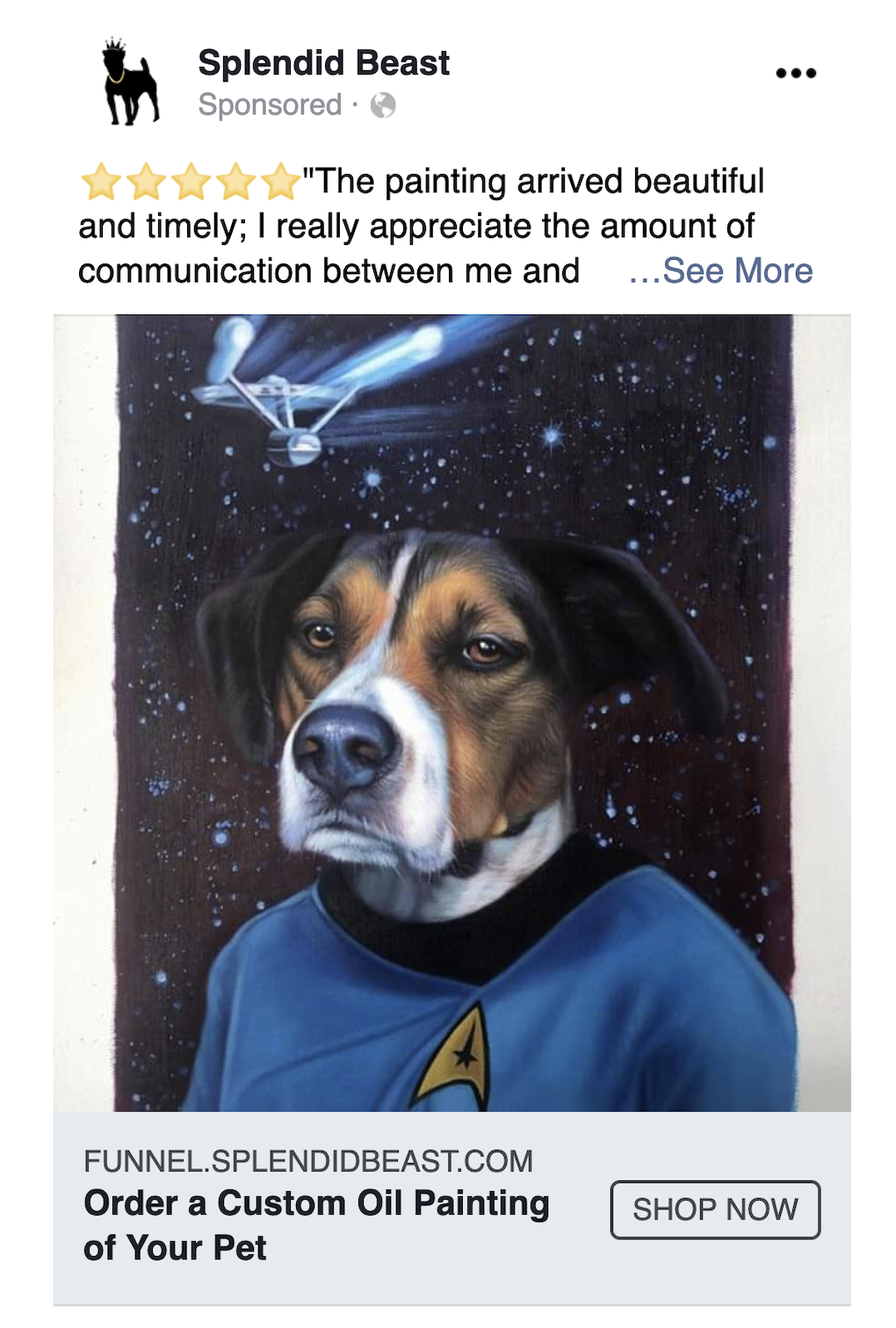
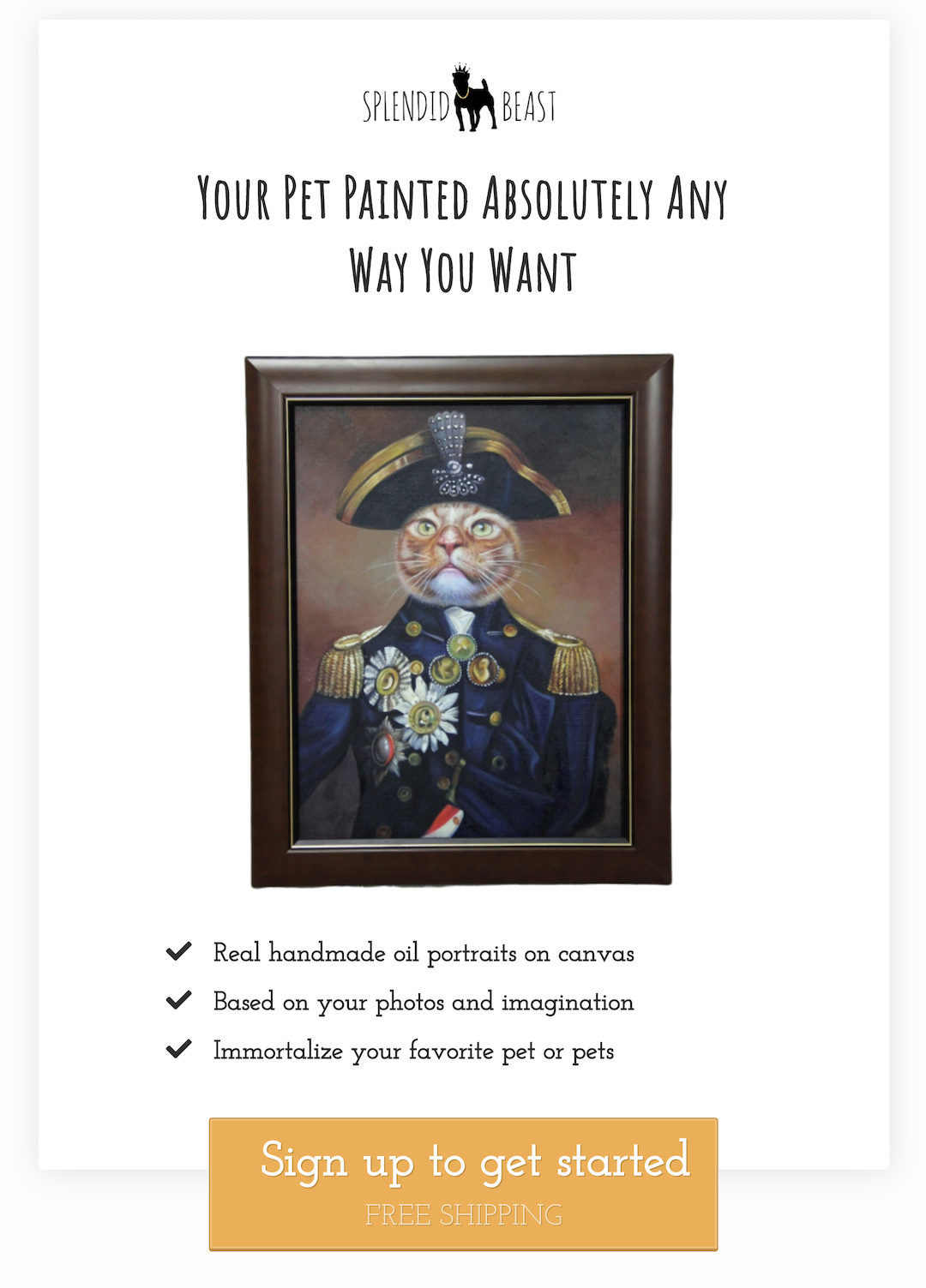
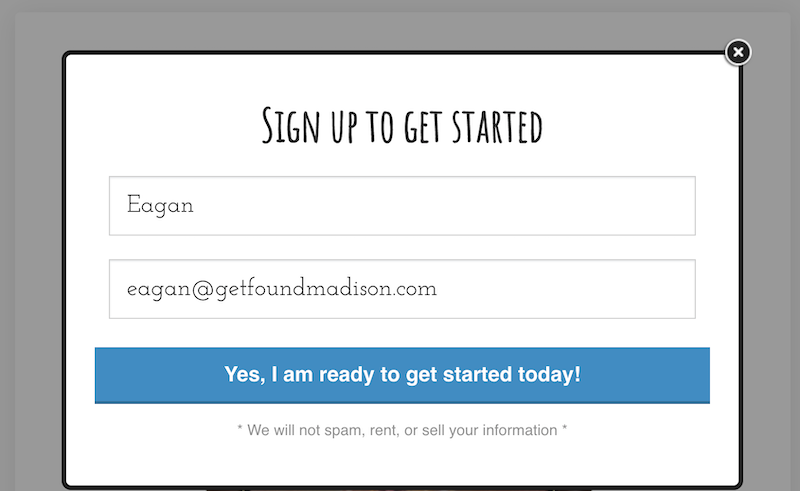


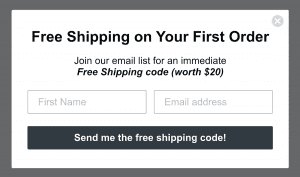
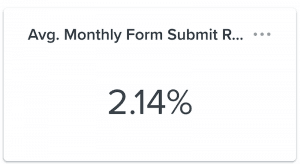
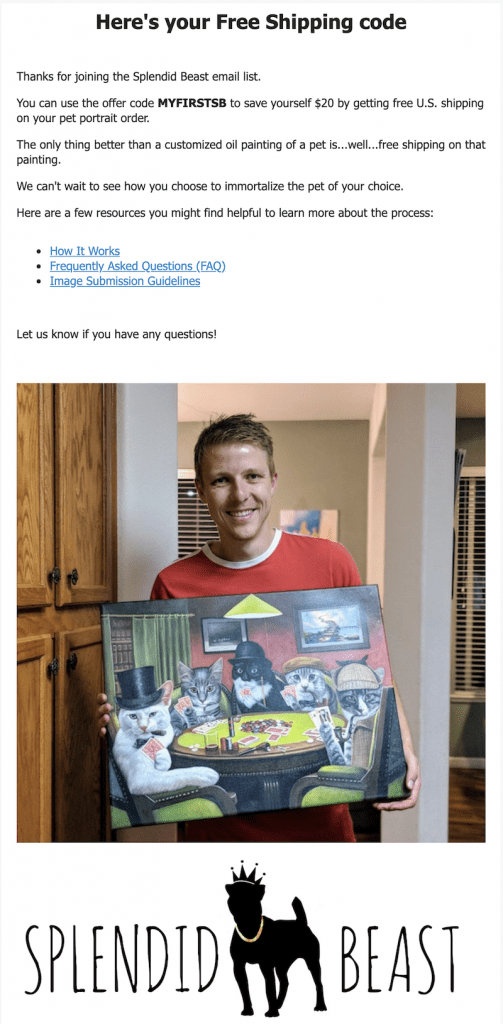
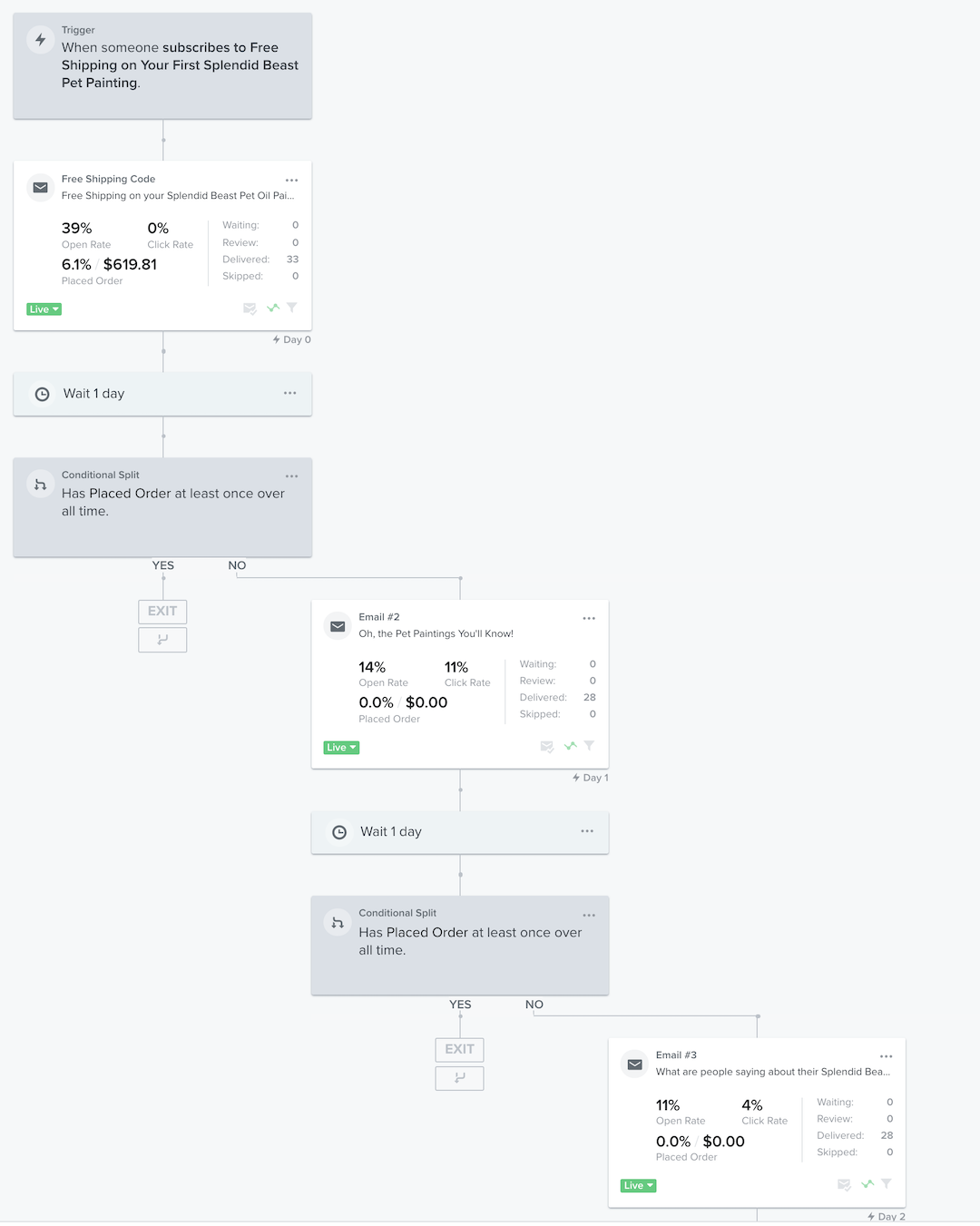
But do they buy?
- Top 25% of website visitors by time onsite (last 30 days)
- People who engaged with our Facebook page in the last year
- Just straight up all website visitors (last 30 days)

- Overall, we spent $391.88 and made $5,942 from these remarketing campaigns (15x ROAS).
- As noted, the top 25% of website visitors ad set crushed it: $108.30 invested turned into $3,005 in sales (27.75x ROAS).
- For Facebook page engagers we spent $92.98 and made $1,137 (12x ROAS)!
- For all website visitors remarketing, we spent $155.92 and made $1,800, for a mere 11.54x ROAS, or a 1,154% return.
I guess you could say those lookie-loos turned into buy-ee-loos!
Huge shoutouts are in order for Caroline, the Facebook ads expert on our team, and Madison’s own Andrew Foxwell, who recommended these targeting strategies on the Ecommerce Influence Podcast and in his courses from Foxwell Digital.
A few caveats to mention, too:
- These are small numbers that probably won’t be able to scale with this same ROAS, but anything profitable is promising. As part owner of Splendid Beast, I’d gladly crank up the ad spend and be happy with a 3-5x ROAS and make a ton more sales.
- This was Q4, so people were holiday shopping.
- Some of the top 25% visitors may have bought anyway, but for these numbers, I’m happy to kick in a few bucks to remind people to finish checkout if they started on the website and left.
A Confession
When I set the team to work on a Facebook ad –> Squeeze Page –> email funnel, I was thinking top-of-funnel visitors (meaning net new people who hadn’t been to our website).
To be honest, that hasn’t really worked. We’ve added people to the email list this way, but Facebook’s Ad analytics aren’t crediting those email sign-ups with sales yet.
We got 38 net new email opt-in from people who had never been to our website before, at a cost of $262.13 total, or $6.90 per new email list subscriber (which could still be profitable long-term depending on how these convert from our monthly email newsletter).

So, all told, we spent $655.80 for top-of-funnel and bottom-of-funnel Facebook ad traffic and made $5,942 for a 9x (or 900%) return. I’m still very happy with that.

And we learned that our funnel might be a great mid-to-bottom-of-funnel piece of marketing!
Who knew?
If I personally went to a website, then was brought back to a squeeze page from a retargeted Facebook ad where the only option is to enter my name and email, I would almost think, “what the hell? Where’s the website? That’s kind of presumptuous.”
But that squeeze page nudge may have been just enough to move people off the indecision fence.
In Robert Cialdini’s seminal book Influence, he mentions the principle of Commitment and Consistency.
Getting people to take small steps may be the secret to getting them to ultimately convert and purchase.
And did the squeeze page make all the difference?
I actually think the targeting and seasonal timing were more important.
Scarcity is another principle of Influence according to Cialdini. We’ve employed that to great effect in Splendid Beast by having a Christmas order cutoff date and promo.
In Oct 2018, we ran remarketing Facebook ads to similar audiences and hit a 15.53x ROAS by sending traffic back to the website with the holiday promo code and deadline. We didn’t have a squeeze page then and saw similar results.
Conclusion
As an aside, I think the hardest part of marketing (and simultaneously the essential essence of it) is thinking like other people.
Thinking, feeling and imagining acting like them.
Other people’s motivations, preferences and responses are almost such a mystery that they require us to do scientific testing to even begin to understand them.
That said, the informal “rule of 7” is not a bad one to follow in marketing. People need to see your marketing multiple times before making a decision. If you’re not remarketing to promising website visitors who leave, you’re missing sales.
I’m happy to report we had a successful test and we plan to spend a lot more on proven campaigns like this in the future.
If you’re looking for help with your online advertising, on Facebook or otherwise, you can contact us here.
